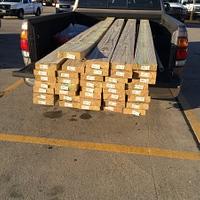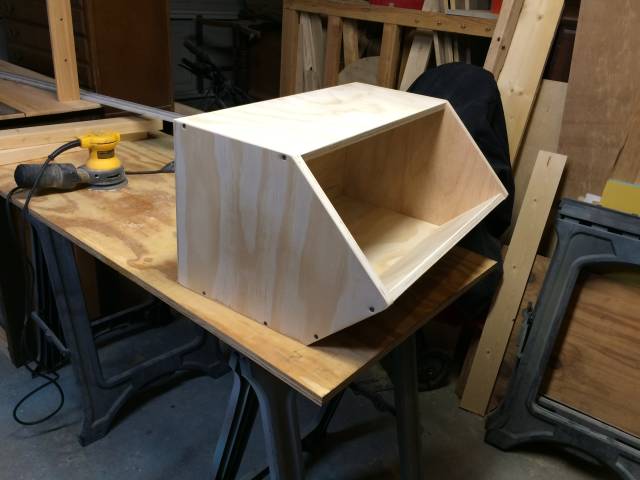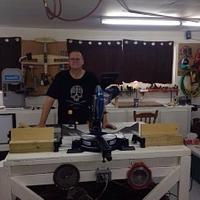
TonyCan
in about 11 years
Plywood ends
I have made a couple low budget pieces made of plywood. I want to know what you do to address the plywood ends as far as exposure. Here is what im working on currently, i have addressed the situation at hand, but not sure if im going about it the right way.

12 Replies
sand real smooth and seal it good clear coat
jim
I like to not expose the ends of plywood. I either keep the ends inside, by design, sometimes 45* deg the outsides or as pat said putting small solid wood to edge band the exposure. If I must treat the edges then I use sanding sealer then polyurethane. An easy idea might be to apply iron on edge banding tape. It comes in many different woods now days and you could match the plywood easily. Then it’s just a matter of applying finish to the whole piece.
CHRIS, Charlottetown PEI Canada. Anytime you can repurpose, reuse, or recycle, everyone wins!
In some design it calls for exposed edges as an architectural element.
This call for very good plywood. I personally like the look. Same as exposed ducts that are common in the design of Lofts e.g.
Madts.
Tor and Odin are the greatest of gods.
If its inside, and you want a little bit of flare, I like offsetting with a small 1/8" thick strip of walnut or oak, it really classes it up and doesn’t take much time.
Like the guys are saying, if its outside, I’d still glue and nail a thin piece on the top of the end grain, its the easiest way to seal it up, and prevent premature failure of your piece. …
Steve Tow
The pieces are painted with regular paint, not stained. I have done a strip of wood on the ends, but i want to keep cost down. I have also done the wood putty and that seems to be the cheapest, but lost of extra work. I will be trying the iron on edge banding next time. We will see how that goes. Now off to the shop to sand this thing!
Hi Tony!
That will work great! Have fun!
Isn’t this site so cool!
I know you knew what the answer was!
Sometimes I just have to ask " the boys "
On here, when I get stuck, its so cool the
Sharing that goes on with this site, non
Judgmental, just good old fashioned comradary!
Steve Tow
this is a good site we all have fun
jim
Sometimes I use joint compound on the edges, but only if it’s a small project and if it’s either disassembled or easy to sand. 2 quick coats with the fan running to help it dry. It sands smooth easily and it’s more durable than it sounds once it’s primed. Obviously you can only do that of you plan to paint it, but it’s cheap and easy. It’s a pain and messy for larger projects, though.
My woodworking mentor showed me how to edge band with the iron on banding like a pro. The trick is to press it in by rubbing it with a block of wood, then trim it with a bastard file. I can make it look seamless when the edge runs with the grain. And so far, it’s been very durable on everything I’ve applied it to including drawer fronts that get a lot of use and the bottom of my file cabinet that I keep kicking and stepping on accidentally. You can also make faux mitres by mitring the banding. Neat trick.
Losing fingers since 1969
I suggest the same techniques Steve and Brian use to most of my students although I find drywall compound seems to work better on MDF than Ply.
woodworking classes, custom furniture maker
that’s true it does work better on mdf
jim
Us Jim’s have to stick together LOL
woodworking classes, custom furniture maker
we do happy wood working
jim














